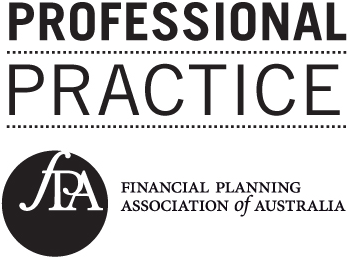Weighing up value and growth
What's the difference between value and growth investing, and how can you incorporate these investment factors into your portfolio?

Most investors in share markets seek both value and growth.
By seeking value, the objective is to find companies whose shares appear to be underpriced (cheap) relative to their earnings and growth potential.
By seeking growth, the objective is to find companies whose shares are expected to grow rapidly in recognition of their potential to increase earnings substantially.
The problem is, growth companies tend to be relatively expensive when compared to value companies because their shares are already on a growth curve.
Value companies are the opposite. Their shares are below fair value, usually because the conditions they need to thrive haven't yet materialised.
The last decade has been relatively challenging for value investors, because cheap (in value) companies have generally underperformed growth (expensive) companies.
Why has that been the case?
The answer largely comes down to the prevailing economic environment over the last 10 years. It was characterised by relatively low economic growth and record low interest rates.
In this type of environment, many investors gravitated to high growth-potential companies in search of future growth, including companies that have been spending most of their cash flow and not currently generating profits.
That's because the low interest rates available had given them the funding ability to grow their businesses significantly in order to generate higher profits down the track.
Over the last 12 to 18 months however, global economic conditions have shifted and they're continuing to do so.
The devastating impact of the COVID-19 pandemic over 2020 and 2021 forced governments around the world to introduce funding programs to help stimulate business activity and consumer demand.
Those activities have turbocharged global economic growth and have been a key factor behind a rapid surge in inflation levels. This, in turn, has already led some central banks to start lifting their official interest rates to dampen inflation.
This current economic environment is expected to favour the value stocks currently generating profits.
But it's expected to be less favourable for growth stocks, because higher interest rates are likely to diminish the value of their future potential profits.
Investing in value and growth
Both value and growth are two well-defined investing factors that influence the market performance of every company to greater or lesser degrees.
And it's relatively easy to invest in these and other factors through specific managed funds and exchange traded funds.
Factor-based funds use a rules-based actively managed approach to invest in companies that exhibit the specific characteristics aligned to their underlying factor strategy.
In doing this they essentially filter out companies that don't meet their particular investment criteria. Depending on the factor strategies chosen, they can deliver investment returns that are superior to the broader market over the long term.
These types of funds can be used to calibrate a portfolio through exposures to one or more factors, or as a total portfolio strategy to manage investment risk.
The key role of factors
Many investors used index funds as the core building blocks of their portfolio and complement their core equities holdings with satellite investments in factor-based funds.
Factors are academically tested drivers of long-term investment growth, and factor-based funds use systematic, logical and repeatable quantitative processes to stay true to the factors they've been designed to track.
Factor-based investing represents a dynamic tool designed to help investors achieve specific investment goals with even a modest allocation.
For example, they can target factors to seek outperformance, maintain equity market exposure while reducing volatility, or offset an undesired exposure in their portfolio.
Ultimately, whether you pick value over growth, or growth over value, comes down to your investment style and approach.
As with any type of active investment strategy, the essential elements remain talent, cost and patience.
The investment talent behind the development and implementation of a factor-based product strategy will be key to its long-term performance. So will cost. The lower the management expense ratio, the more you get to keep out of your total returns.
Direct targeting of factors through factor-based funds can offer the many benefits of traditional active fund investing but at a lower cost and with less manager risk.
But patience should not be overlooked in factor strategies. Factor timing is extremely difficult, and strategies that attempt to do so are ill-advised.
You therefore need to have patience over the long term to stick with a factor-based investment strategy.
Tony Kaye
20 Apr, 2022
vanguard.com.au
Latest eNewsletters
Hot Issues
- How to budget using the envelope method
- Accountants united in support for changes
- Investment and economic outlook, October 2025
- Stress-test SMSF in preparation for Div 296
- Determining what is an in-house asset can help determine investment strategy
- Beware pushy sales tactics targeting your super
- Call for SMSF ‘nudge’ in DBFO package
- How Many Countries Divided From The Largest Empire throughout history
- How changes to deeming rates could affect your pension payments
- Five building blocks that could lead to a more confident retirement
- Investment and economic outlook, September 2025
- Caution needed if moving assets to children
- Evolution of ‘ageless workers’ sees retirement age rise
- Younger Australians expect more for their retirement
- New NALE guidance still has issues
- Airplane Fuel Consumption Per Minute
- How $1,000 plus regular contributions turned into $823,000 through compounding
- Common sense the best defence against fraudsters: forensic auditor
- Investment and economic outlook, August 2025
- New report highlights confusion over BDBNs
- How ‘investment procrastination’ could be hurting your wealth
- ATO warns that SAR lodgments are on its radar
- Compassionate release warning issued
- The biggest earthquakes in history : (1905–2025)
- How financial advice can reduce stress and save time
- How personal data could boost your retirement income by up to 50%
- Investment and economic outlook, July 2025
- ATO flags October SAR lodgment date
- Death benefits not reliant on probate
- Challenges with TBC increase for those in pension phase
- Avoid LRBA structure short cuts
- The rise and fall of the world’s largest economies | GDP Epic Battle (1560–2025)


